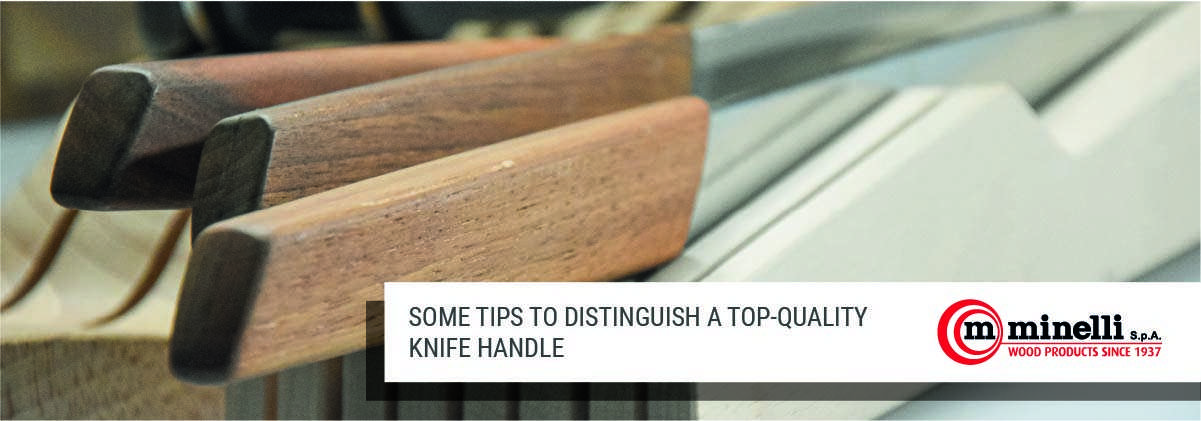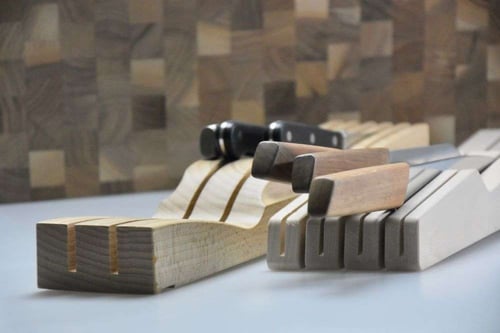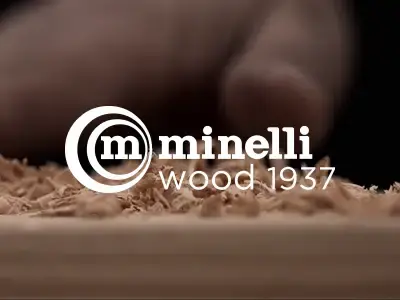 A beautiful knife that feels unpleasant in the owner’s hands won’t perform well. There are many knife handle materials, shapes, and designs to choose from, and clients should find the one that works best for them.
A beautiful knife that feels unpleasant in the owner’s hands won’t perform well. There are many knife handle materials, shapes, and designs to choose from, and clients should find the one that works best for them.
Choosing a top-quality object ensures durability, strength, good handling, and endurance.
In this article, you will learn what to look for when choosing top-quality knife handles to offer in your catalogue.
Want to widen your catalogue with perfectly made knife handles? Our advice
A knife handle often gets less attention than the blade, as many people believe the handle is simply an aesthetic choice. Even if the blade is an essential component of the knife, however, the handle can influence its comfort and functionality.
All parts of the knife, in fact, work together to provide the perfect cut.
Especially people who use knives quite often really know the importance of the handle. A perfect knife handle depends on the size of the owner’s hands and the exact purpose of the knife. Only knives with custom handles will be perfect for the client’s specific needs.
With that in mind, let’s take a look at the elements you must consider to select a top-quality knife handle to offer in your catalogue.
Material
Today, knife handles can be made of a wide variety of natural and synthetic materials, each with its own strengths and weaknesses. The choice of the right material depends on the purpose of the knife and the owner’s preferences.
Natural materials, such as wood and bone, are considered the most beautiful and traditional. Wood is the most popular handle material and has been appreciated since knives came into existence for its elegance, prestige, and durability.
Wood can be used to create kitchenware tools and outdoor knives but can also be collectors’ items. An expert manufacturer can also create unique and original shapes resulting in very innovative tools.
Wooden knives are also sustainable and eco-friendly, which is very important for most people today.
Synthetic materials, such as stainless steel, aluminum, and titanium, for example, are also resistant and durable but often too heavy and uncomfortable to hold if used for kitchenware tools or camping knives.
Most are also smooth, which makes the knife very slippery when wet.
Grip
The grip is crucial for knife handles. A good grip provides better control, increasing accuracy and speed while cutting. It also contributes to preventing slippage and lessens the chance of accidents.
Your clients should be able to hold the handle in their hands before choosing the right one, which is the only way to understand if it really fits the owner’s requirements.
Wood is generally more pleasant to the touch if compared with plastic or metal. Special treatments and finishes can also increase the grip, e.g., textured or knurled handles, preventing the knife from slipping away.
 Safety
Safety
The handle material and shape also contribute to a knife’s safety. As mentioned above, nonslip handles are good to prevent accidents while cooking.
Wooden handles are safer for customers, as they can be treated with special food contact paints (EN1934-2004) that protect them from moisture and avoid the proliferation of mold and germs. Special antibacterial varnishes containing active metals are available that guarantee better durability and resistance to bacteria.
Finishes
For many people, knives are not just objects. They can be collectors’ items or objects of design to decorate the kitchen. That is why good finishes are important to evaluate.
An expert manufacturer will be able to advise you about the best finish for a certain material to ensure a top-quality product.
Some special finishes, for example, can make wooden handles stronger and water repellent and are ideal for outdoor knives.
Other finishes can make the knife more elegant and prestigious, such as polymer coatings or laser engravings. These can be perfect for a collector’s item or an object of design.
Balance
Balance refers to the relationship between the weight of the blade and that of the handle. Top-quality knives have good balance with not too much weight either in the blade or the handle.
Balance makes cutting easier and requires less effort, making it simple to make precise cuts. A poorly balanced knife, on the contrary, will cause pressure points on hands or wrists that will become more painful with prolonged use.
 Only expert and highly competent manufacturers consider balance when creating a knife, which is why choosing the right wood maker is necessary.
Only expert and highly competent manufacturers consider balance when creating a knife, which is why choosing the right wood maker is necessary.
Wood provides the perfect combination of comfort, design, durability, functionality, safety, and sustainability, but you must find a competent supplier that is able to manage it perfectly to create precise, high-quality knife handles.
If the supplier does not have the right competency and experience as well as the necessary tools and technologies to manage wood properly, you won’t be able to offer top-quality wooden knives in your catalogue.
If you are looking for a reliable supplier with decennial experience in wood manufacturing, do not hesitate to contact us.
The Minelli Group is known all over the world for the quality and design of its wooden products and for the experience and competency of its specialists who are always at your service!








